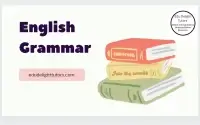Second Term Revision Basic Science and Technology Kindergarten Week 11
Basic Science and Technology – Week 11 Revision of All Topics Covered
Kindergarten – Age 5 – Second Term Lesson Notes
Part A: Review and Revision
20 FAQ with Answers on Topics Previously Taught This Term
- What is air?
Air is all around us. It is invisible but we can feel it when it moves. - Why do we need air?
We need air to breathe. It gives us oxygen to stay alive. - How do we breathe?
We breathe by taking air in through our nose or mouth and letting it into our lungs. - What are bones?
Bones are hard parts inside our body that help us stand and move. - Why do we need bones?
Bones help give our body its shape and protect important parts like the brain and heart. - What are the parts of the body involved in breathing?
The nose, windpipe, and lungs help us breathe. - What is a fracture?
A fracture is when a bone breaks. - What is measurement?
Measurement helps us find out how long or heavy something is. - Why do we measure things?
We measure things to know their size, length, or weight. - What is the length of an object?
The length is how long something is from one end to the other. - What is the difference between living and non-living things?
Living things can grow, breathe, and move. Non-living things cannot do these things. - Can air be seen?
No, air is invisible, but we can feel it and see it move things. - What is the skull?
The skull is the bone that protects the brain. - What is the rib cage?
The rib cage is a set of bones that protect the heart and lungs. - How do we use our lungs?
Our lungs help us take in air and release used air when we breathe. - What is the nose’s job?
The nose helps us breathe in air and smell things. - What happens when we breathe in?
When we breathe in, air goes into our lungs to give us oxygen. - What happens when we breathe out?
We release air from our lungs that our body doesn’t need. - How do we measure with a ruler?
We use a ruler to find out how long something is. - What is the windpipe?
The windpipe carries air from the nose or mouth to the lungs.
Part B: Objective Questions
(20 Fill-in-the-Blank Questions with Options a, b, c, or d)
- We breathe in through our ____.
(a) mouth
(b) nose
(c) eyes
(d) ears - The ____ protects the brain.
(a) rib cage
(b) skull
(c) heart
(d) lungs - Air is ____ around us.
(a) green
(b) invisible
(c) hot
(d) solid - The ____ helps us breathe.
(a) eyes
(b) lungs
(c) hands
(d) stomach - We use a ____ to measure length.
(a) spoon
(b) ruler
(c) pencil
(d) cup - The rib cage protects the ____ and ____.
(a) stomach, arms
(b) lungs, heart
(c) brain, legs
(d) fingers, neck - A ____ is a broken bone.
(a) bruise
(b) fracture
(c) cut
(d) burn - Living things can ____.
(a) move
(b) sleep
(c) eat food
(d) all of the above - We measure things to know their ____.
(a) color
(b) shape
(c) weight and length
(d) sound - We breathe out the ____.
(a) oxygen
(b) air
(c) carbon dioxide
(d) food - The ____ helps us smell things.
(a) ears
(b) nose
(c) mouth
(d) hands - Our body uses ____ to breathe.
(a) food
(b) air
(c) water
(d) clothes - The windpipe carries air to the ____.
(a) mouth
(b) lungs
(c) head
(d) legs - Bones are important because they ____.
(a) help us walk
(b) protect organs
(c) help us talk
(d) help us see - The length of an object is ____.
(a) how high it is
(b) how far it is
(c) how heavy it is
(d) how long it is - The ____ is where the heart and lungs are protected.
(a) rib cage
(b) skull
(c) stomach
(d) brain - We measure ____ to know how big something is.
(a) sound
(b) time
(c) length
(d) color - We use a ____ to measure how heavy something is.
(a) ruler
(b) scale
(c) tape measure
(d) clock - The ____ carries air from the mouth to the lungs.
(a) heart
(b) lungs
(c) windpipe
(d) stomach - The ____ helps us see things.
(a) mouth
(b) nose
(c) eyes
(d) ears
Part C: Theory Questions
(20 Simple Short-Answer Questions)
- What is air?
- Name two parts of the body that help us breathe.
- What does the rib cage protect?
- How do we breathe?
- What happens when we breathe in?
- How do we measure length?
- What part of the body helps us breathe in air?
- What is the windpipe?
- Why do we need bones?
- What is a fracture?
- What part of the body protects the brain?
- How can we tell if an object is heavy?
- Why do we measure things?
- What do we use to measure the length of a book?
- What do we use to measure the weight of an apple?
- What is a living thing?
- What is a non-living thing?
- Why do we need to take care of our bones?
- How do we use a ruler?
- What happens when we breathe out?
Part D: True or False Questions
(20 True or False Questions)
- Air is visible. (False)
- We use our nose to breathe in air. (True)
- Bones help our body move. (True)
- The skull protects the heart. (False)
- We breathe in carbon dioxide. (False)
- The lungs help us breathe. (True)
- We use our mouth to measure things. (False)
- The windpipe carries air to the stomach. (False)
- We can see air. (False)
- The rib cage protects the lungs and heart. (True)
- We use a ruler to measure weight. (False)
- Air is important for breathing. (True)
- A fracture is a type of bruise. (False)
- We breathe in oxygen. (True)
- The length of an object is how heavy it is. (False)
- Bones are soft. (False)
- The nose helps us smell. (True)
- Air is necessary to stay alive. (True)
- Living things cannot grow. (False)
- The windpipe is a part of the breathing system. (True)
Part E: Fill in the Gaps Questions
(20 Fill-in-the-Blank Questions Without Options)
- We breathe in air through our _____.
- Our _____ helps us breathe and take in oxygen.
- The _____ protects our brain.
- A _____ is when a bone breaks.
- We use a _____ to measure the length of a pencil.
- We breathe out carbon _____.
- The _____ carries air from the mouth to the lungs.
- The _____ helps us stand and move.
- Living things can _____ and grow.
- The _____ protects the heart and lungs.
- A _____ is an example of a living thing.
- We use our _____ to smell things.
- The _____ helps us breathe and release air.
- The windpipe is also called the _____.
- We measure things to find out how ____ they are.
- The lungs are part of the _____ system.
- The _____ is used to measure the weight of an object.
- We use our _____ to touch things.
- The _____ helps us measure time.
- Air is _____ because we can feel it, but not see it.
This lesson revision covers all the key topics taught throughout the term in a simple, engaging way, ensuring that young learners can easily understand and recall important concepts.


Related posts:
- Basic Science and Technology Kindergarten Age 5 Second Term Lesson Notes
- Living and Non-Living Things Basic Science and Technology Kindergarten Second Term Week 7
- Mid-Term Assessment and Break Basic Science and Technology Kindergarten Second Term Week 6
- Growing Our Food Basic Science and Technology Kindergarten Second Term Week 5
- Body Protective Foods Basic Science and Technology Kindergarten Second Term Week 4
Related Posts


Kidaya (Counting) Hausa Primary 1 First Term Lesson Notes Week 10


Gaisuwa/Gaishe-Gaishe Hausa Primary 1 First Term Lesson Notes Week 6


Vowel Sounds Letter Work Kindergarten Age 5 First Term Lesson Notes Week 4
About The Author
Edu Delight Tutors
Am a dedicated educator with a passion for learning and a keen interest in technology. I believe that technology can revolutionize education and am committed to creating an online hub of knowledge, inspiration, and growth for both educators and students. Welcome to Edu Delight Tutors, where learning knows no boundaries.
